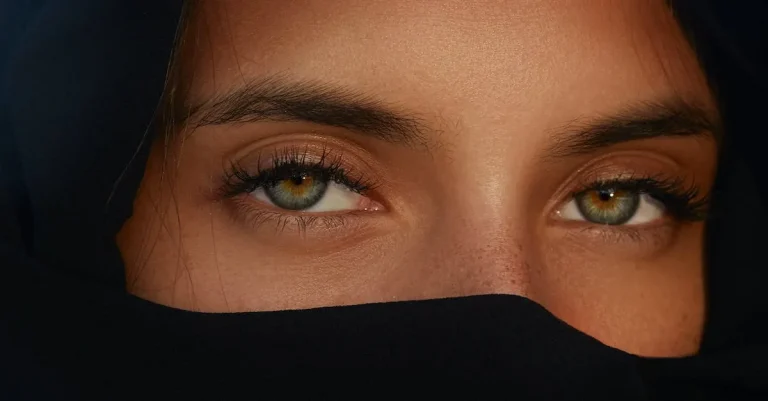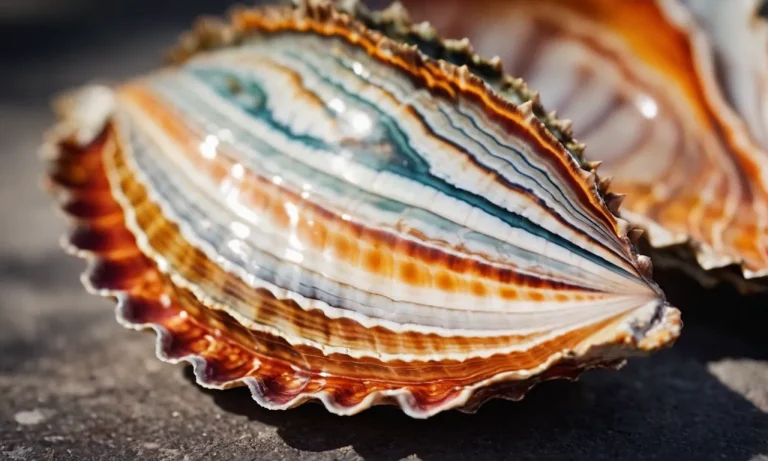The Eye of Horus is one of the most distinctive ancient Egyptian symbols, but what does this mysterious icon actually mean? If you’re looking for a quick answer, the Eye of Horus represents healing, protection, sacrifice and even resurrection.
In this comprehensive guide, we’ll explore the myths and history behind the Eye of Horus, analyze its key symbolic meanings, and explain why it remains such an iconic symbol today.
What is the Eye of Horus?
The Eye of Horus is an ancient Egyptian symbol that holds great meaning and symbolism. It is one of the most recognizable symbols from ancient Egypt and has been a subject of fascination for historians, archaeologists, and enthusiasts alike. The symbol is associated with the Egyptian god Horus, who was often depicted as a falcon.
The Story Behind the Symbol
The Eye of Horus has its origins in ancient Egyptian mythology. According to the ancient texts, Horus was the son of Osiris and Isis. Osiris was the god of the afterlife and Isis was the goddess of magic and fertility. Horus was said to have lost his left eye during a battle with his uncle Set, who was jealous of his power. However, the eye was magically restored by the god Thoth. The restored eye became a powerful symbol of protection, healing, and restoration.
Appearance and Description
The Eye of Horus is often depicted as a stylized human eye with distinctive markings. The eye is typically depicted as a right eye, although in some representations, it can also be a left eye. The eye is adorned with several markings, including a teardrop-shaped marking below the eye and a curved line extending from the outer corner of the eye. These markings are believed to represent the markings of a falcon, symbolizing the connection to the god Horus.
Alternative Names and Spellings
The Eye of Horus is known by various names and spellings in different contexts. In ancient Egyptian hieroglyphics, it is known as the Wedjat Eye. It is also referred to as the Eye of Ra, as Ra is another important Egyptian god associated with the sun. The symbol is sometimes called the Eye of Providence or the All-Seeing Eye in other cultures and religious traditions.
The Eye of Horus has captured the imagination of people throughout history and continues to be a symbol of protection, healing, and divine power. Its rich symbolism and intriguing backstory make it a fascinating subject of study and interpretation.
Meanings and Symbolism of the Eye of Horus
Healing and Protection
The Eye of Horus, also known as the Wadjet eye, is a powerful symbol that holds deep meanings and symbolism. One of its primary meanings is associated with healing and protection. In ancient Egyptian mythology, the eye was believed to have the ability to heal and ward off evil. It was often used as a protective amulet, worn by individuals to keep them safe from harm. The eye was also seen as a symbol of divine intervention, providing guidance and support to those who believed in its powers. Today, the Eye of Horus continues to be a symbol of protection and is often used in jewelry and artwork as a talisman.
Sacrifice and Restoration
Another significant meaning of the Eye of Horus is tied to sacrifice and restoration. In Egyptian mythology, the eye was said to have been torn out during a battle between Horus and Set, the god of chaos. However, it was later restored by Thoth, the god of wisdom and magic. This story symbolizes the cycle of sacrifice and restoration, where something is lost but eventually regained. The Eye of Horus represents the idea that sometimes we must go through difficult times and make sacrifices in order to restore balance and find wholeness.
Royalty and Power
The Eye of Horus is also closely associated with royalty and power. In ancient Egypt, the eye was believed to be a symbol of the pharaoh’s divine authority and protection. It was often depicted on the headdresses of pharaohs and used as a symbol of their power and legitimacy. The eye was seen as a representation of the pharaoh’s connection to the gods and their ability to rule with wisdom and strength. Even today, the Eye of Horus is recognized as a symbol of authority and power.
Unity and Perfection
The Eye of Horus is a symbol of unity and perfection. The eye is divided into six parts, each representing one of the senses – sight, hearing, taste, touch, smell, and thought. Together, these parts create a unified whole, symbolizing the importance of balance and harmony. The Eye of Horus also represents the concept of perfection, as each part is believed to be flawless. This symbolism reminds us of the importance of striving for balance and perfection in our own lives.
The Eye of Horus in Ancient Egypt
Ancient Egypt was a civilization known for its rich mythology and intricate symbolism, and one of the most prominent symbols was the Eye of Horus. This symbol, also known as the Wedjat or Udjat, had deep meaning and significance in Egyptian culture.
Use in Egyptian Mythology
The Eye of Horus was closely associated with the god Horus, who was believed to be the son of Osiris and Isis. According to Egyptian mythology, Horus lost his left eye during a battle with his uncle Seth. However, the eye was magically restored by the god Thoth, symbolizing healing and protection.
The Eye of Horus was believed to have protective and healing qualities, and it was often worn as an amulet or used as a protective symbol in ancient Egypt. It was also associated with the concept of divine vision, representing the all-seeing eye of the gods.
Appearance in Hieroglyphs and Art
The Eye of Horus was a prominent symbol in Egyptian hieroglyphs and art. It was depicted as a stylized eye with distinctive markings, including the “teardrop” shape below the eye and the “eyebrow” above it. These markings were believed to represent the markings of a falcon, the sacred bird associated with Horus.
The Eye of Horus was often depicted in combination with other symbols, such as the ankh (symbolizing life) or the djed pillar (symbolizing stability and endurance). These combinations of symbols added layers of meaning and significance to the Eye of Horus.
The Eye of Horus as an Ancient Egyptian Symbol
The Eye of Horus was not only a symbol of protection and healing but also represented concepts such as wisdom, knowledge, and enlightenment. It was believed to provide guidance and insight to those who sought it.
The symbol of the Eye of Horus is still widely recognized and used today. It has become a popular motif in jewelry, tattoos, and artwork, with many people drawn to its ancient and mystical significance.
For more information on Egyptian mythology and symbolism, you can visit https://www.ancient.eu/Egyptian_Mythology/.
Modern Uses and Significance
Use in Spirituality and Esoteric Traditions
The Eye of Horus, an ancient Egyptian symbol, continues to hold significant meaning in various spiritual and esoteric traditions today. Many believe that it represents protection, wisdom, and spiritual insight. In some practices, it is used as a talisman or amulet to ward off evil and bring good fortune. The Eye of Horus is also associated with the third eye, which is believed to provide access to higher levels of consciousness and spiritual awakening.
In ancient Egyptian mythology, the Eye of Horus was said to be the eye of the sky god Horus, representing his power and protection. It was believed to have the ability to see everything and provide guidance and protection to those who invoked its energy. Today, many people still invoke the energy of the Eye of Horus through meditation, visualization, or wearing jewelry or tattoos featuring the symbol.
Influence on Fashion and Pop Culture
The Eye of Horus has also made its mark in the world of fashion and pop culture. Its distinctive shape and powerful symbolism have been embraced by designers and artists, making it a popular motif in clothing, accessories, and artwork. You can find the Eye of Horus adorning everything from t-shirts and jewelry to home decor and even tattoos.
This symbol has become synonymous with mystery, spirituality, and a sense of ancient wisdom. It appeals to those who seek a connection to the past and a deeper understanding of the world. Celebrities and influencers have also embraced the Eye of Horus, further popularizing its use in fashion and pop culture.
Prevalence in Mysticism and Conspiracy Theories
The Eye of Horus has also found its way into various mystical and conspiracy theories. Some believe that it holds hidden knowledge or secrets that can unlock mystical powers or reveal hidden truths about the universe. These beliefs have led to the symbol being associated with secret societies, ancient civilizations, and even extraterrestrial beings.
While some of these theories may be purely speculative, they highlight the enduring fascination and intrigue surrounding the Eye of Horus. It continues to capture the imagination of those who are drawn to the mysteries of the ancient world and the possibility of hidden knowledge.
It’s important to note that while the Eye of Horus has gained popularity in modern culture, its true meaning and significance can vary depending on individual interpretations and beliefs. Whether embraced for its spiritual symbolism, fashion appeal, or as a subject of intrigue, the Eye of Horus remains an enduring symbol that continues to captivate and inspire.
Conclusion
The Eye of Horus continues to be one of the most prominent and recognizable symbols of ancient Egypt. With its intricate meaning relating to healing, protection and sacrifice, the iconic eye has remained a source of mystery and fascination throughout the ages.
In addition to its importance for the ancient Egyptians, the distinctive icon has influenced spirituality and popular culture and remains a powerful symbol of mysticism, royalty and perfection.






